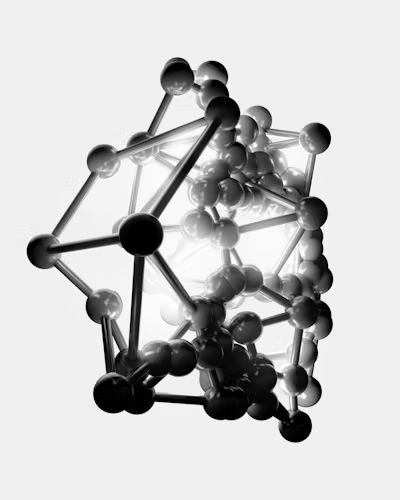Introduction to Chemical Bonds
Chemical bonds are the invisible threads that hold our world together. They play a crucial role in determining how molecules interact, shaping everything from the air we breathe to the food we eat. Among these fascinating connections, HCOOCH (formate), CH2 (methylene), and H2O (water) stand out as key players in various chemical reactions and processes.
Whether you’re a seasoned chemist or just curious about the science around you, understanding these molecular relationships can open your eyes to the intricacies of life itself. From their basic structures to their vital roles in everyday applications, let’s dive into the captivating world of chemical bonds and explore the unique interplay between HCOOCH, CH2, and H2O.
Basics of Covalent and Hydrogen Bonds
Chemical bonds are the forces that hold atoms together in molecules. Two primary types of bonds dominate this realm: covalent and hydrogen bonds.
Covalent bonds occur when two atoms share electrons. This sharing allows each atom to achieve greater stability, often resembling the electron configuration of noble gases. For instance, in HCOOCH (formate), carbon atoms form strong covalent connections with oxygen and hydrogen, creating a stable structure.
On the other hand, hydrogen bonds are weaker interactions compared to covalent ones. These occur between a hydrogen atom bonded to an electronegative atom like oxygen or nitrogen and another electronegative atom nearby. In water (H2O), these delicate but crucial attractions lead to many of its unique properties.
Understanding these bond types is essential for grasping how different molecules interact within various environments.
The Molecules in Question: HCOOCH, CH2, and H2O
HCOOCH, commonly known as methyl formate, is an intriguing molecule. It features a carbonyl group and an ester bond. This structure gives it unique properties, making it useful in various industrial applications.
Next, we have CH2 or methylene. As a simple functional group, it’s a building block for many organic compounds. Its presence can significantly alter the behavior of larger molecules.
Then there’s H2O—water. The essence of life itself! Water’s polar nature allows it to dissolve numerous substances, making it vital for biological processes.
Each of these molecules plays distinct roles in chemistry and everyday life. They interact with one another in fascinating ways that influence their behaviors and functionalities across different environments. Understanding them deepens our appreciation for chemical interactions around us.
Properties and Uses of HCOOCH, CH2, and H2O
HCOOCH, or methyl formate, is an intriguing compound. It’s a colorless liquid with a sweet odor and plays a vital role in organic synthesis. Often used as a solvent, it finds applications in the production of various chemicals.
Then there’s CH2, commonly known as methylene. This simple molecule serves as a building block for many larger compounds. Its presence is essential in industrial processes like plastics manufacturing and even pharmaceuticals.
Water (H2O) stands out due to its unique properties. It’s crucial for all forms of life on Earth. Beyond sustaining life, water acts as a universal solvent and regulates temperature extremes thanks to its high heat capacity.
Each of these molecules showcases distinct characteristics that contribute significantly to science and industry alike. Their diverse uses highlight the intricate web woven by chemical bonds in our world today.
Interactions Between the Molecules
The interactions between HCOOCH, CH2, and H2O are both fascinating and complex. Each molecule has distinct characteristics that influence how they bond with others.
HCOOCH, or methyl formate, engages in dipole-dipole interactions due to its polar nature. This makes it an effective solvent for various reactions involving organic compounds.
On the other hand, CH2 represents a simple hydrocarbon structure that primarily exhibits Van der Waals forces. Though weak compared to covalent bonds, these forces can still play a significant role in molecular arrangements.
Water (H2O) is known for its hydrogen bonding capabilities. These strong attractions not only give water unique properties but also facilitate critical biological processes.
When these molecules interact within different environments, their behaviors change dramatically. Understanding these interactions helps chemists design better substances for industrial applications or even pharmaceuticals.
The Role of Chemical Bonds in Everyday Life
Chemical bonds are the invisible threads that weave together the fabric of our daily lives. From the air we breathe to the food we eat, these bonds shape our environment.
Take water, for example. Its hydrogen bonds allow it to exist in three states: solid, liquid, and gas. This versatility is vital for all living organisms.
The connections between molecules like HCOOCH and CH2 help create everyday products such as solvents and fuels. These compounds serve various purposes in both industrial applications and household items.
Moreover, chemical bonding plays a crucial role in biological processes. Proteins rely on specific interactions between amino acids to function properly within cells.
Even emotions can be tied back to chemistry; neurotransmitters bind with receptors, affecting mood and behavior. The intricate world of chemical bonds surrounds us continuously, influencing countless aspects of life without us even realizing it.
Conclusion
Understanding the intricate world of chemical bonds reveals much about the molecules that surround us. HCOOCH, CH2, and H2O each play unique roles in our lives, tied together by their fundamental interactions. The properties of these molecules highlight their significance in various applications, from industrial uses to biological processes.
The interplay between covalent and hydrogen bonds shapes not only the characteristics of these substances but also how they interact with one another. As we continue to explore chemistry’s wonders, it’s clear that chemical bonds are vital components of our everyday existence. Embracing this knowledge opens doors to new discoveries and innovations in science and technology.
As you delve deeper into chemistry, remember: every bond tells a story worth understanding.







